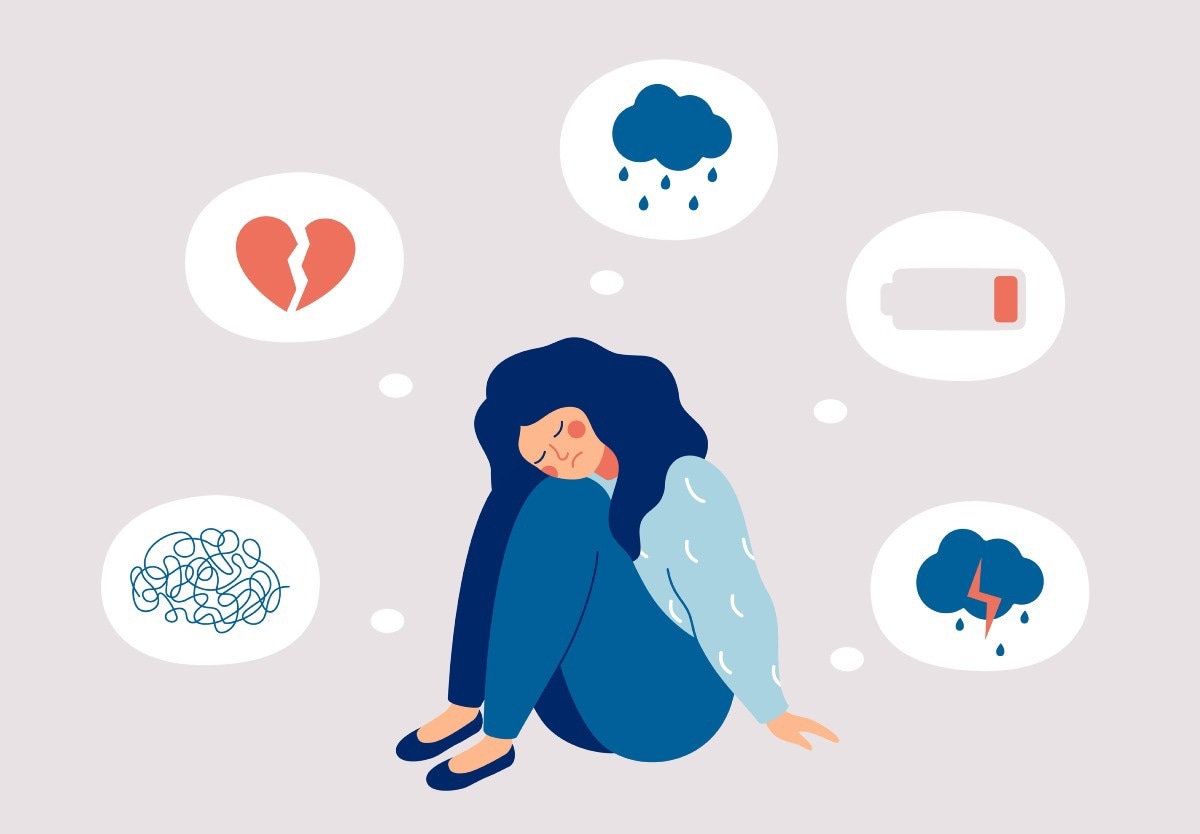In a recent study published in the American Journal of Preventive Medicine, researchers explored the trends in the prevalence of depression from 2015 to 2020.

The most prevalent mental illness in the U.S. is major depression, which also carries the highest risk for suicidal behavior. According to early reports from 2020 and forward, the coronavirus 2019 (COVID-19) pandemic may have contributed to the nation's escalating mental health problem, particularly among adolescents and young individuals. To eventually assess and effectively address the pandemic's effects on mental health, green tea rinse for hair loss precise pre-pandemic national estimations are essential.
About the study
In the present study, researchers calculated the annual prevalence of major depression within the previous 12 months among Americans aged 12 years or older between 2015 and 2020.
The National Survey on Drug Use and Health (NSDUH) provided the data for the study. The NSDUH offers yearly cross-sectional national data on substance use and mental health in the U.S. Datasets from each year between 2015 and 2019 were combined. To account for individual-level nonresponse, person-level analysis sample weights were calculated and then modified to guarantee consistency with population estimates received from the U.S. Census Bureau. The original weight was divided by the total number of data sets to get a new weight.
Based on the diagnostic and statistical manual of mental disorders, fourth edition (DSM-IV) criteria, questions to measure major depressive episodes (MDEs) were addressed for adults and adolescents aged between 12 and 17 years. For respondents over the age of 18 years, depression modules were adapted from the National Comorbidity Survey-Replication, while those for respondents between the ages of 12 and 17 years were adapted from the National Comorbidity Survey-Adolescent.
Based on reporting five or more of the nine MDE symptoms, including either a depressed mood, loss of interest, or pleasure in daily activities throughout a two-week period, both adult and adolescent respondents were categorized as having a lifetime MDE. Those who met the requirements for a lifetime MDE and stated they felt depressed or lost interest in everyday activities along with other symptoms for at least two weeks during the previous 12 months were further classified as having past-year MDE. The adolescent and adult factors were combined to form the past-year MDE variable for this investigation.
Two questions were used to gauge last year's depression help-seeking behavior. In addition to being queried if they had received prescription medicine for their MDE symptoms in the previous 12 months, respondents were also asked if they had recently consulted or spoken with a medical doctor (MD) or other professional about their symptoms.
Results
After controlling for sociodemographic factors, the prevalence of recent depression increased from 7.3% in 2015 to 8.6% in 2019, and this monotonic increase from 2015 to 2019 persisted. In 2020, 9.2% of people had depression in the previous year.
Stratifying the population according to age, the highest prevalence of depression across the study period was found among adolescents aged between 12 and 17 years and young adults aged between 18 and 25. The prevalence of depression increased from 12.7% in 2015 to 15.8% in 2019 and 16.9% in 2020 among adolescents. Furthermore, the number of depression patients increased from 10.3% in 2015 to 15.5% in 2019 and 17.2% in 2020 in adults aged between 18 and 25. Moreover, depression was reported by 7.5% in 2015, 10.9% in 2019, and 9.9% in 2020 by adults aged between 26 and 34 years. The prevalence of depression was consistently higher for women than for men. Depression increased from 4.7% in 2015 to 6.3% in 2019 and 6.4% in 2020. Furthermore, 9.7% in 2015, 10.8% in 2018, and 11.8% in 2020 of women reported depression.
When stratified by marital status, persons who were neither currently married nor previously were more likely to experience depression. For individuals who had never been married, there was an increase in depression cases between 2015 and 2019 in unadjusted models. In either unadjusted or adjusted models, married people, as well as those who were widowed, divorced, or separated, did not experience an increase in depression. Regarding income, those with the lowest household income had the highest frequency of depression, whereas those with the highest household income had the lowest prevalence of depression.
When taking education into account, those with some college education had a higher frequency of depression than all other subgroups of education. In individuals who had completed high school, had some college education, or had a graduate degree, the prevalence of depression increased from 2015 to 2019. In both unadjusted and adjusted studies, the frequency of depression among people without high school graduation did not change between 2015 and 2019.
Overall, the study findings showed a definite rise in both treated and, more importantly, untreated depression. The researchers believe it is essential to expand evidence-based initiatives that support early intervention, prevention, and education about depression.
- Renee D. Goodwin, Lisa C. Dierker, Melody Wu, Sandro Galea, Christina W. Hoven. (2022). American Journal of Preventive Medicine. doi: https://doi.org/10.1016/j.amepre.2022.05.014 https://www.ajpmonline.org/article/S0749-3797(22)00333-6/fulltext
Posted in: Medical Science News | Medical Research News | Disease/Infection News
Tags: Adolescents, Coronavirus, covid-19, Depression, Diagnostic, Doctor, Education, Frequency, Medicine, Mental Health, Pandemic

Written by
Bhavana Kunkalikar
Bhavana Kunkalikar is a medical writer based in Goa, India. Her academic background is in Pharmaceutical sciences and she holds a Bachelor's degree in Pharmacy. Her educational background allowed her to foster an interest in anatomical and physiological sciences. Her college project work based on ‘The manifestations and causes of sickle cell anemia’ formed the stepping stone to a life-long fascination with human pathophysiology.
Source: Read Full Article
